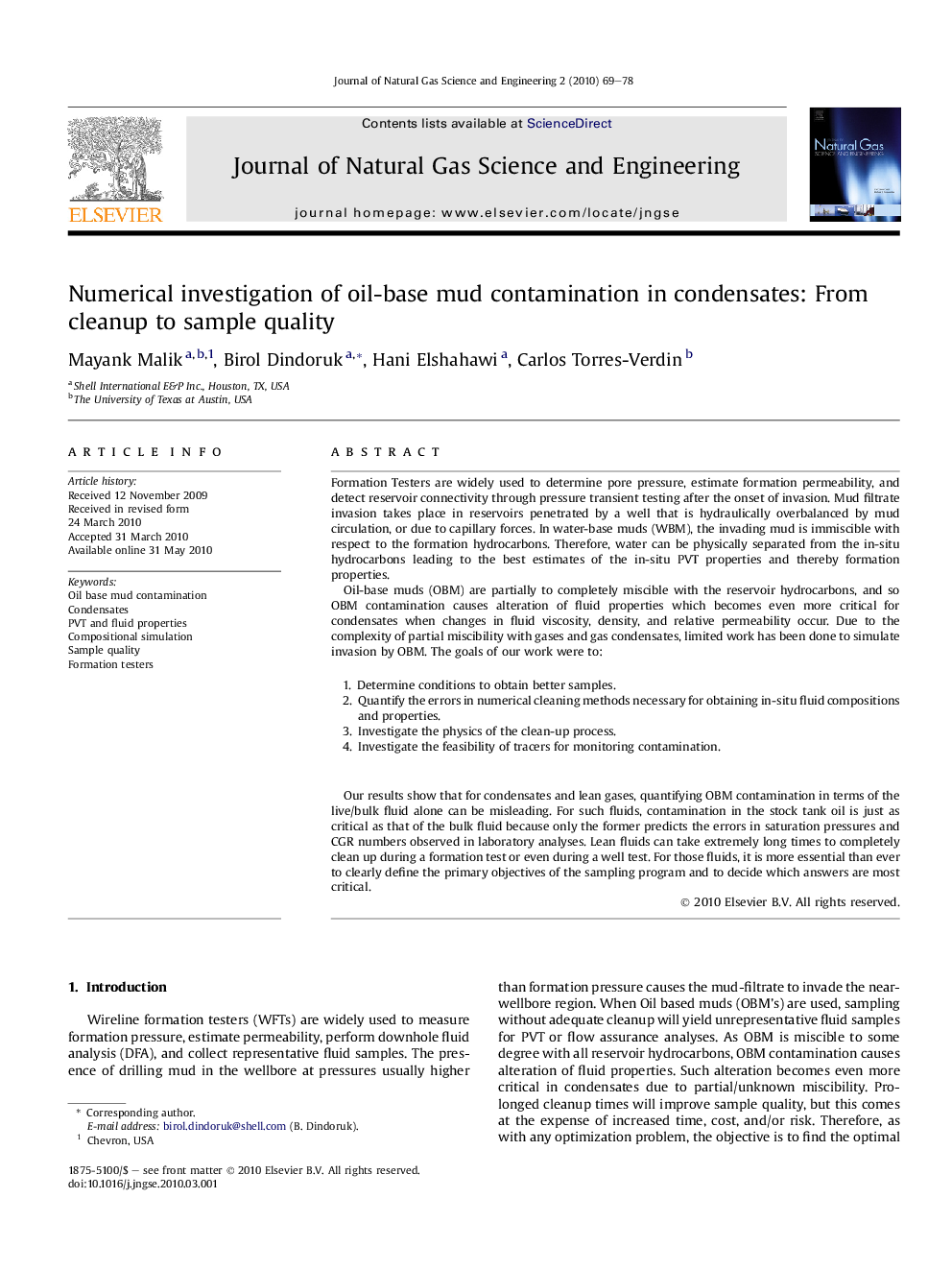| کد مقاله | کد نشریه | سال انتشار | مقاله انگلیسی | نسخه تمام متن |
|---|---|---|---|---|
| 1758245 | 1523037 | 2010 | 10 صفحه PDF | دانلود رایگان |

Formation Testers are widely used to determine pore pressure, estimate formation permeability, and detect reservoir connectivity through pressure transient testing after the onset of invasion. Mud filtrate invasion takes place in reservoirs penetrated by a well that is hydraulically overbalanced by mud circulation, or due to capillary forces. In water-base muds (WBM), the invading mud is immiscible with respect to the formation hydrocarbons. Therefore, water can be physically separated from the in-situ hydrocarbons leading to the best estimates of the in-situ PVT properties and thereby formation properties.Oil-base muds (OBM) are partially to completely miscible with the reservoir hydrocarbons, and so OBM contamination causes alteration of fluid properties which becomes even more critical for condensates when changes in fluid viscosity, density, and relative permeability occur. Due to the complexity of partial miscibility with gases and gas condensates, limited work has been done to simulate invasion by OBM. The goals of our work were to:1.Determine conditions to obtain better samples.2.Quantify the errors in numerical cleaning methods necessary for obtaining in-situ fluid compositions and properties.3.Investigate the physics of the clean-up process.4.Investigate the feasibility of tracers for monitoring contamination.Our results show that for condensates and lean gases, quantifying OBM contamination in terms of the live/bulk fluid alone can be misleading. For such fluids, contamination in the stock tank oil is just as critical as that of the bulk fluid because only the former predicts the errors in saturation pressures and CGR numbers observed in laboratory analyses. Lean fluids can take extremely long times to completely clean up during a formation test or even during a well test. For those fluids, it is more essential than ever to clearly define the primary objectives of the sampling program and to decide which answers are most critical.
Journal: Journal of Natural Gas Science and Engineering - Volume 2, Issues 2–3, July 2010, Pages 69–78